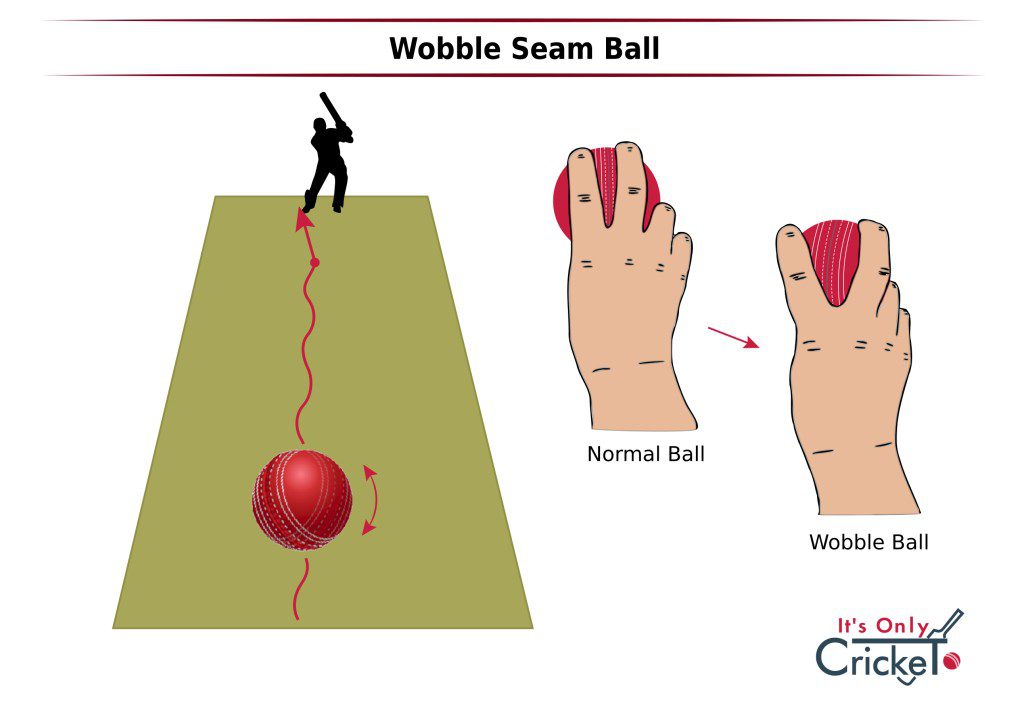Table of Contents
Fast bowlers are always looking to innovate and to implement new deliveries. The wobble seam ball is one of the newest inventions but how does it work?
What is a Wobble Seam Delivery?
A wobble seam ball is delivered by a seam bowler. The seam is upright when the ball is released but, as opposed to a traditional seamer’s ball, where the seam stays upright, that seam will wobble slightly from side to side.
The theory is that the seam has a higher chance of hitting the pitch and deviating from its original course.

Who Invented the Wobble Seam in Cricket and When?
The man credited with inventing the wobble seam delivery is England’s James Anderson. He’s the leading test wicket taker among fast bowlers and is always looking for new ways to confuse the batters.
In interviews around the time, Anderson said that he first used the wobble seam ball on England’s successful Ashes tour of 2010/11. It was an extra weapon for the bowler when the ball had stopped swinging.
There are some who credit the technique to the Pakistani seamer Mohammad Asif. Anderson admits to devising the delivery after watching Asif on Pakistan’s tour of England in 2010. There are definite similarities although Jimmy Anderson’s has some minor technical differences.
Since it was first seen, Anderson’s new ball bowling partner Stuart Broad has also employed the wobble seam ball to good effect. In the present day, many of the world’s top bowlers have a version of this ball that they use when the conditions aren’t working for swing or conventional seam.
How to Bowl the Wobble Seam?
Bowling the wobble seam delivery requires a similar technique to a regular seamer’s ball.
Grip
Start by holding the ball as you would for a regular seamer’s delivery. The seam will be upright and the ring finger and the middle finger will be on either side of that seam.
The thumb rests on the back to offer a level of control.
Now split the two fingers slightly so that they are wider apart. The seam now becomes more visible. Remember not to split those fingers too wide otherwise you will lose control and the ball could fly anywhere.
Run up
Keep the run up exactly the same as you would for a conventional delivery. There should be an element of surprise with this ball and we don’t want the batter to suspect that something different is coming.
Release
There is a subtle difference to master as you release the ball. Try to keep the wrist ‘locked’ with no flexibility at all. Now, as the ball is let go, you are not trying to ‘push’ the ball to the batter as you would with a regular seam delivery.
Instead, the idea is to let the ball roll out of the fingers as naturally as possible. If you’ve done all of this correctly, the ball should ‘wobble’ in the air. There is a higher chance of it hitting the seam as it lands and deviating off the pitch.
Bowlers recommend that you target the top of off stump when you release the ball and this is a good area for any type of faster delivery.
When you’re practising the wobble seam ball in the nets, there are a couple of training aids that you can implement to check whether or not you are getting it right. If you or your club has access to a camera, this is a great way to see whether the seam is wobbling in the air.
If there is no camera available, a training ball which is red on one side and white on the other is a good indicator of some wobble.
Conclusion
Cricket is evolving all the time. As soon as we think there’s no room for any new deliveries, another one comes along. Hitting the seam is important for the faster bowlers so the wobble ball is really interesting.
In theory, the degree of wobble means that there is a higher chance of that seam being hit as the ball lands. Seam movement can then go either way.
It does raise a question as to why bowlers don’t use this all the time. It’s a tricky one to master and it can take away the potential for the ball to swing, but it appears that the wobble seam ball is a useful one to add to a bowler’s list.


